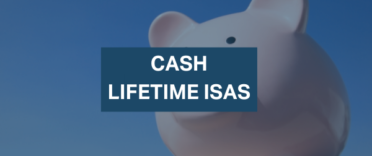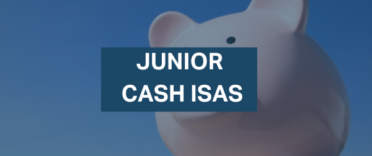 The basic premise of a cash ISA is that it is a tax-free savings account. Every tax year you can deposit up to the annual ISA limit of £20,000 and watch your money earn interest and grow without needing to worry about paying tax. With interest rates moving away from the rock-bottom lows of the last decade, cash ISAs may be making a resurgence. In this article we will cover the basics to help you understand whether a cash ISA is the best home for your savings.
The basic premise of a cash ISA is that it is a tax-free savings account. Every tax year you can deposit up to the annual ISA limit of £20,000 and watch your money earn interest and grow without needing to worry about paying tax. With interest rates moving away from the rock-bottom lows of the last decade, cash ISAs may be making a resurgence. In this article we will cover the basics to help you understand whether a cash ISA is the best home for your savings.
How a cash ISA works
A cash ISA works just like a traditional savings account, but the money you save is tax free. What you put away earns interest over time to boost the total value of your savings pot. Unlike with a stocks and shares ISA, a cash ISA has a guaranteed interest rate. You can usually only save up to £20,000 a year into your cash ISA, but you may be able to deposit more if you have made a withdrawal and your ISA is flexible.
Read more about flexible ISAs in our article ‘What is a flexible ISA?’.
There are a whole host of different types of cash ISA, so you should be able to find an account that suits your needs. This might be an easy-access ISA, which lets you withdraw money whenever you need it, or a fixed-rate ISA, which holds your money for a set period.
If you find a new cash ISA account that pays a better rate of interest than the cash ISA you opened in a previous tax year, you can transfer for free. You do not need to close your old account, just notify your new provider that you would like to transfer an existing ISA.
Read more about transferring an existing ISA in our article 'ISA transfers explained - everything you need to know'
Can you have more than one cash ISA?
You are able to have multiple cash ISAs open at once, however, you can only open one new cash ISA each tax year. This means that if you have opened a cash ISA since 6 April, you cannot open another one until the next 6 April.
The exception here is if you are transferring an ISA from a previous year. Transferring an old ISA is not the same as opening a new one, so it does not count towards your annual ISA limit. However, you will not be able to further top up the cash ISA you have transferred if you have already funded a new one this tax year. This is because you can only pay into one ISA of each type per year.
Different types of cash ISA
You can split your annual ISA allowance across a cash ISA, stocks and shares ISA, innovative finance ISA and lifetime ISA, but not among different ISAs of the same type. For example, if you put £10,000 into a cash ISA, you could then deposit up to £10,000 into a stocks and shares ISA, but not a different cash ISA.
The exception here is the lifetime cash ISA. Even if you have already paid into a standard cash ISA, you can still deposit into your lifetime cash ISA in the same tax year, so long as you are within your ISA allowance.
There are four main types of cash ISA:
Easy-access cash ISAs
This is the most common type of cash ISA and gives you flexible access to your money. The interest rate may vary, but you are free to move your money without paying a penalty if it drops below a level you are happy with.
Fixed-rate cash ISAs
With this type of cash ISA, your rate of interest will remain fixed for a specified length of time. The downside is that you will need to pay a penalty if you wish to withdraw the money during the specified timeframe.
Learn more by reading our dedicated article on ‘Fixed Rate ISAs’.
Halal cash ISA
This is a Sharia-compliant savings account that does not pay interest, but does pay an Expected Profit Rate (EPR). The EPR is not guaranteed, but it means you can earn money without any interest payments that could conflict with your ethics.
Find out more about Sharia-compliant banking in our article 'Are ISAs Halal?’.
Lifetime cash ISA
Lifetime cash ISAs – also called cash LISAs – pay a government bonus of 25% on all deposits, though you can only pay in up to £4,000 per tax year. This means that if you add £4,000 to your cash LISA, you will get a £1,000 bonus from the government. The downside is that you can only use your LISA once you reach 60 or to fund a deposit for your first home (if it costs £450,000 or less). For any other spending, you will be hit with a 25% withdrawal charge.
You can pay into a standard cash ISA and a cash LISA in the same year. We explain how they work in more detail in our article ‘Lifetime ISAs explained – are they the best way to save?’.
Accessing your cash ISA
When you are able to take money out of your ISA account will depend on the type of cash ISA you open. With an instant or easy-access cash ISA, you can pick and choose when to withdraw money or even empty the account entirely.
The rules are more strict with a fixed-rate or fixed-term cash ISA. In this case you can only take money out of the account for free once the initial term has ended. You may still be able to withdraw money in an emergency, but there could be a penalty fee to pay.
A lifetime cash ISA is different. If you plan to put some or all of your LISA towards the deposit on your first home, the process will likely be carried out by your conveyancer, so you will not actually withdraw the cash yourself. You can only access your money yourself for free once you reach 60. At any other age you will need to pay a hefty 25% fee.
How much can you put in a cash ISA?
There is a strict limit on how much you can contribute to your ISAs in a single tax year. The current cap is £20,000, which can be split across a cash ISA, a stocks and shares ISA, an innovative finance ISA and a lifetime ISA. You can only pay into one account of each type per year.
If you have a flexible ISA, your total deposits can exceed £20,000 in a single tax year. This is because you can withdraw money from an ISA, then pay it back in. For example if you contribute the full £20,000 to your cash ISA, then later in the same tax year withdraw £3,000, you will still have £3,000 left of your ISA allowance. Not every bank or building society offers flexible ISAs, so make sure to check with your provider to avoid going over your limit. We explain this in more detail in our article ‘What is a flexible ISA?’.
What are the pros and cons of cash ISAs?
Here are the main advantages and disadvantages of saving into a cash ISA.
Pros of cash ISAs
- Tax-free savings
- Guaranteed interest rate
- Easy to transfer
Cons of cash ISAs
- Interest rates can vary
- Cash may be locked away
- Exit fees can apply
- Returns may be lower than with a stocks and shares ISA
Are cash ISAs safe?
Any money you save with a UK financial institution regulated by the FCA (Financial Conduct Authority) is protected by the Financial Services Compensation Scheme (FSCS). This means that your savings are guaranteed up to £85,000 per banking group if your provider goes bust.
Keep in mind that some banks and building societies are part of the same banking group. This means that your £85,000 protection will be split across all the accounts you hold with those different providers.
What are the alternatives to cash ISAs?
There are alternative ways to save if you have already opened a cash ISA this tax year, or you are looking for greater returns on your money.
Stocks and shares ISAs
You could try investing your money in a stocks and shares ISA. You will still get the tax-free benefits of an ISA and because the money is invested in stocks and shares, you may be able to access better returns on the money you pay in. However, investing comes with additional risk. Markets can be volatile and the value of your investment could go down as well as up. Fees are often higher with a stocks and shares ISA as you may need to pay a platform fee as well as fund fees and admin charges. Investing can seem like an intimidating option for some beginners, but it is actually a relatively simple and straightforward process. It also gets much easier once you understand the basics.
You can find out more by reading our article ‘How to set up a stocks and shares ISA – a step-by-step guide’.
Savings accounts
With the advent of the personal savings allowance, basic rate taxpayers are able to earn £1,000 in interest without needing to pay tax on the money. This can, in some cases, balance out the tax-free benefits of an ISA. However. some savings accounts will limit the amount of money you can save each month, or even the total amount you can hold in the account, although there is no universal limit like there is with an ISA.
Read more in our article on ‘Regular Savings Accounts’.
Premium bonds
Premium bonds pay regular monthly prizes rather than interest. Each £1 bond has an equal chance of winning and so the more you invest, the more chance you have of winning. The odds of winning a prize are 24,0001, meaning the notional rate of interest currently stands at 3.30%. You could win far more than the notional interest rate, or you could win nothing at all. As premium bonds are backed by the government, your money will be safe. You can cash out your bonds at any time.
Current accounts
It may seem strange to keep your savings in your current account, but many providers now pay interest on your total balance. There may be certain restrictions such as minimum monthly deposits or direct debit requirements, but it can be an easy way to save.
The downside is that you may be more tempted to spend your savings if the money is sat in a current account, rather than a savings account or ISA.
We have a dedicated article on the top ‘High Interest Current Accounts’.




